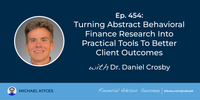Explore web search results related to this domain and discover relevant information.

In the realm of personal finance, debt is often viewed as a barrier to wealth creation. Yet, when approached strategically, debt management can become a catalyst for long-term prosperity. Behavioral finance—a discipline that merges psychology with economic theory—reveals how human biases ...
In the realm of personal finance, debt is often viewed as a barrier to wealth creation. Yet, when approached strategically, debt management can become a catalyst for long-term prosperity. Behavioral finance—a discipline that merges psychology with economic theory—reveals how human biases and motivations shape financial decisions.Conversely, the snowball method prioritizes small-balance debts, offering frequent psychological rewards. Behavioral finance principles suggest that immediate progress—such as crossing off a paid-off loan—activates the brain’s reward system, reinforcing positive behavior.Similarly, categorizing expenses into “envelopes” (e.g., “debt repayment,” “emergency savings”) creates psychological boundaries that curb impulsive behavior [2]. Paying off debt is not merely about eliminating liabilities—it’s about creating capacity for wealth-building. Consider the 42% of Americans who prioritize debt reduction in 2025 [4]. For every dollar redirected from debt interest to investments, compounding returns amplify its value. A $10,000 debt payoff, for example, could transform into a $50,000 investment portfolio over two decades with a 7% annual return. Financial advisors play a critical role here, acting as behavioral coaches to reframe debt as a tool for wealth creation rather than a burden [3].The urgency of restructuring personal finances cannot be overstated. Behavioral finance research shows that delayed action exacerbates the psychological toll of debt, creating a cycle of avoidance and stress. Proactive strategies—whether avalanche or snowball—interrupt this cycle by aligning financial goals with human psychology.

Money decisions aren’t just about math and the hardcore numbers. They’re shaped by emotions. Decades of behavioral research shows that emotions such as fear, stress and time pressure can meaningfully shape financial decisions, from impulsive purchases to panicked trades.
Money is emotional and your habits may be holding you back. Learn which emotional pitfalls to avoid so you can make smarter financial choices and build long-term wealth.The same traits that make people emotionally intelligent can also keep your money decisions on track.Behavioral and clinical studies consistently show that stress and emotions can lead to biased judgment and risk preferences.Unfortunately, it’s easiest to blame your spouse or partner when financial issues arise, but you could also look to blame a financial advisor or someone else in your life that could have encouraged or supported a financial decision that didn’t work out well for you.

By applying a qualitative perspective—not commonly used in behavioral finance—our study highlights the dynamic chain of emotions → biases → decisions and the role of social context. While limited by sample size and the short simulation period, this research provides empirical insights ...
Our paper investigates how emotions and cognitive biases shape small investors’ decisions in a bearish market or are perceived as such. Using semi-structured interviews and a focus group, we analyze the behavior of eight management science students engaged in a three-day trading simulation with virtual portfolios.These emotional dynamics contributed to the emergence of cognitive biases such as loss aversion, anchoring, confirmation bias, overconfidence, familiarity bias and herd behavior. Emotions often acted as precursors to biases, which then translated into specific decisions—such as holding losing positions, impulsive “revenge” trades or persisting with unsuitable financial strategies.Social comparison through portfolio rankings also moderated responses, offering both comfort and additional pressure. By applying a qualitative perspective—not commonly used in behavioral finance—our study highlights the dynamic chain of emotions → biases → decisions and the role of social context.Financial decision-making has long been framed by traditional finance, where investors are assumed to be rational agents maximizing utility through systematic cost–benefit calculations (Singh, 2012). Behavioral finance has challenged this view, showing that bounded rationality, emotions and cognitive biases often shape real-world decisions (Pak & Mahmood, 2015; Treffers et al., 2020).
Behavioral finance is an interdisciplinary field that merges economics with psychology to understand how psychological factors influence financial decision-making among investors. It challenges the traditional neoclassical economic theory, which posits that investors are rational and markets ...
Behavioral finance is an interdisciplinary field that merges economics with psychology to understand how psychological factors influence financial decision-making among investors. It challenges the traditional neoclassical economic theory, which posits that investors are rational and markets are efficient.The field emerged in the late 1970s, notably through the work of psychologists Daniel Kahneman and Amos Tversky, who introduced concepts like prospect theory, which explains how people perceive risk. Behavioral finance has gained traction as a legitimate investment strategy, particularly in light of market volatility and anomalies that traditional theories struggle to explain.This evolving discipline not only enriches economic theory but also offers practical tools for navigating financial markets, making it a vital area of study for both academics and practitioners. ... By: Flynn, Simone I.Go to EBSCOhost and sign in to access more content about this topic. This article focuses on behavioral finance.It provides an overview of the history of behavioral finance. The relationship and debate between behavioral finance and neoclassical economic theory is addressed. The topics of investor bias, efficient markets, rational investors, risk attitudes, mental accounting, and investor overconfidence are explored.

Behavioral finance is the study of the psychological biases, emotions and subconscious beliefs of investors and how they can affect decision-making.
The CFP Board now lists “psychology of financial planning” as one of the eight principal knowledge domains covered in the CFP® certification exam. “The fact that the CFP Board identified the psychology of financial planning as a formal knowledge topic to become a CERTIFIED FINANCIAL PLANNER® is indicative of how important behavioral finance has become,” Klontz says.Behavioral finance is the study of the psychological factors, emotions and subconscious beliefs of investors and how they can affect decision-making.Advisors now find themselves managing client behavior, and this is at the heart of behavioral finance.Financial professionals use behavioral finance to help their clients identify and overcome certain psychological biases so they can make better financial decisions.

Behavioral finance is defined as the study of behaviors that deviate from traditional rational expectations in financial decision-making, examining how individual characteristics, emotions, and social factors influence financial choices and outcomes.
AI generated definition based on: Pacific-Basin Finance Journal, 2016 ... Press Enter to select rating, 1 out of 3 starsPress Enter to select rating, 2 out of 3 starsPress Enter to select rating, 3 out of 3 stars ... You might find these chapters and articles relevant to this topic. ... Behavioral finance is a modern area of study in finance which aims to combine behavioral and cognitive psychological theory with conventional economics and finance to provide explanations for the reasons why people make irrational financial decisions.The Efficient Market Hypothesis assumes that the competition between investors seeking abnormal profits drive prices to their “correct” value. The EMH does not assume that all investors are rational, but it does assume that markets make unbiased forecasts of the future. In contrast the behavioral finance assumes that financial markets are informationally inefficient.Behavioral finance theory holds that markets might fail to reflect economic fundamentals under conditions of irrational behavior, systematic patterns of behavior and limits to arbitrage in financial markets. Investors behave irrationally when they don’t correctly process all the available information while forming their expectations of a company’s future.Behavioral finance theory suggests that the patterns of overconfidence, overreaction and over representation are common to many investors and such groups can be large enough to prevent a company’s share price from reflecting economic fundamentals.2 When investors assume that a company’s recent performance alone is an indication of future performance, they may start bidding for shares and drive up the price.
Unlock the essentials of corporate finance with our free resources and get an exclusive sneak peek at the first module of each course. Start Free · Behavioral finance is the study of the influence of psychology on the behavior of investors or financial analysts.
Unlock the essentials of corporate finance with our free resources and get an exclusive sneak peek at the first module of each course. Start Free · Behavioral finance is the study of the influence of psychology on the behavior of investors or financial analysts.Traditional finance includes the following beliefs: Both the market and investors are perfectly rational · Investors truly care about utilitarian characteristics ... Learn more in CFI’s Behavioral Finance Course!Another behavioral finance bucket is related to emotion, but we’re not going to dwell on this bucket in this introductory session. Basically, emotion in behavioral finance refers to our making decisions based on our current emotional state.Here is a list of common financial biases. ... There are ways to overcome negative behavioral tendencies in relation to investing.


The BMNR Phenomenon: Behavioral Finance and the Psychology of Risk in Speculative Markets
The BMNR phenomenon is a testament to the power of behavioral finance in shaping market outcomes. While cognitive biases like anchoring, overconfidence, and herd mentality can drive extraordinary gains, they also amplify risks. By integrating insights from the reflection effect and domain-specific risk preferences, investors can build strategies that harness psychological dynamics without succumbing to them.In the volatile world of speculative investing, few stories have captured the interplay of behavioral finance and risk-taking as vividly as BitMine Immersion Technologies Inc.- BMNR's 2,500% stock surge and collapse in 2024 exemplifies behavioral finance principles like the reflection effect and domain-specific risk preferences.During the stock's ascent, retail investors exhibited risk-seeking behavior, driven by the allure of gains and the narrative of a “crypto gateway.” Anchored to endorsements from figures like Tom Lee and Peter Thiel, as well as a $250 million PIPE announcement, investors ignored red flags such as BMNR's lack of operational infrastructure or Ethereum holdings.
She has worked in multiple cities ... investing, and real estate. ... Behavioral finance is an economic theory that ascribes the irrational behavior of individuals making financial choices to psychological factors or biases....
Adam Hayes, Ph.D., CFA, is a financial writer with 15+ years Wall Street experience as a derivatives trader. Besides his extensive derivative trading expertise, Adam is an expert in economics and behavioral finance. Adam received his master's in economics from The New School for Social Research and his Ph.D.He currently researches and teaches economic sociology and the social studies of finance at the University of Lucerne in Switzerland.Adam's new book, "Irrational Together: The Social Forces That Invisibly Shape Our Economic Behavior" (University of Chicago Press) is a must-read at the intersection of behavioral economics and sociology that reshapes how we think about the social underpinnings of our financial choices.She has worked in multiple cities covering breaking news, politics, education, and more. Her expertise is in personal finance and investing, and real estate. ... Behavioral finance is an economic theory that ascribes the irrational behavior of individuals making financial choices to psychological factors or biases.Behavioral finance can be analyzed from a variety of perspectives. Stock market returns are one area of finance where psychological behaviors are often assumed to influence market outcomes and returns but there are also many different angles for observation.
:max_bytes(150000):strip_icc()/GettyImages-912018754_journeycrop_investing_psychology-cccbb76e85294f4298172f5334042d3b.jpg)

This study develops a portfolio-focused behavioral model to investigate how the multidimensional components of financial literacy—knowledge, attitude, and behavior—shape financial risk tolerance among mutual fund investors in Türkiye.
Mutual fund investors typically have higher financial awareness and structured decision-making processes, enabling a more nuanced analysis of the impact of financial literacy dimensions on risk tolerance. Drawing on behavioral finance, financial capability theory, and the theory of planned behavior, the model traces direct and indirect paths from literacy components to risk preferences.Based on data from 703 Turkish mutual fund investors and using validated Organization for Economic Cooperation and Development (OECD)/International Network on Financial Education (INFE) and Grable-Lytton scales, our structural equation model (SEM) reveals that financial behavior is the primary driver of risk tolerance, mediating the influence of knowledge and attitudes.The study highlights the behavioral dynamics of financial capability in emerging markets and calls for financial education programs that go beyond knowledge transfer to cultivate actionable attitudes and proactive behaviors among informed investors.These findings emphasize that financial literacy translates into risk-related decision-making primarily through behavior.
People often make financial decisions based on emotions rather than rationality.1 · Behavioral finance uses financial psychology to analyze investors' actions. According to behavioral finance, investors aren’t rational.
Traditional economic theories assume that people act rationally when making financial decisions. So, what is behavioral finance? It's an economic theory that explains often irrational financial behavior, such as overspending on credit cards or panic selling during a market downturn.People often make financial decisions based on emotions rather than rationality.1 · Behavioral finance uses financial psychology to analyze investors' actions. According to behavioral finance, investors aren’t rational.The concept of behavioral finance dates to 1912 when George Seldon published “Psychology of the Stock Market.” However, the theory gained popularity and momentum in 1979 when Daniel Kahneman and Amos Tversky proposed that most investors tend to make decisions based on subjective reference points rather than objectively choosing the best option.3A year later, Richard Thaler introduced the notion of “mental accounting,” which is the idea that people view their money differently based on its function, such as whether it’s for retirement or a college fund. Eventually, their work became the basis for the study of cognitive psychology and behavioral biases in finance, which features prominently in the field of behavioral finance.

The Behavioral Finance Working Group studies financial markets using approaches grounded in psychological research, with applications in asset pricing, corporate finance, and household finance.
Nicholas C. Barberis is the Stephen and Camille Schramm Professor of Finance at the Yale School of Management. His research focuses on understanding the implications of cognitive psychology for investor trading and the pricing of financial assets.


#FASuccess Podcast Ep454 with Dr. Daniel Crosby on how he has turned abstract behavioral finance concepts into practical tools advisors can use.
September 9, 2025 07:02 am 0 Comments CATEGORY: Financial Advisor Success Podcast ... Executive SummaryPodcast Player:Resources Featured In This Episode:Full Transcript:The Differences In How Advisors And Clients See The Value Of Behavioral Finance [11:21]Incorporating Behavioral Finance Concepts Into AdvisorTech Solutions [16:59]Five Dimensions Of Money Conflict [22:23]Navigating Money Personality Differences And Similarities In Client Couples [32:41]Financial Advisors' Place On The Five Dimensions [42:05]Incorporating Positive Psychology Into The Client Goal-Setting Process [46:37]Daniel's JWelcome everyone! Welcome to the 454th episode of the Financial Advisor Success Podcast! My guest on today's podcast is Dr. Daniel Crosby. Daniel is the Chief Behavioral Officer of Orion, an technology platform serving financial advisors.What's unique about Daniel, though, is how he has turned abstract behavioral finance concepts into practical tools advisors can use to understand their clients' relationships with money and to help them set better goals.We also talk about how Daniel has helped develop a tool that allows advisors to incorporate positive psychology principles into the planning process to better understand what makes clients flourish, how Daniel has clients rank the importance of six items related to flourishing (including leisure, work, relationships, meaning, personal growth, and physical health) and then rate themselves on how well they're doing on each item, and how Daniel finds that identifying divergences between these scores (for example, rating relationships as important but giving a low self-rating on it) can help advis

BMNR and the Psychology of Speculation: How Behavioral Finance Can Reframe Risk-Taking in Volatile Markets
In the annals of speculative investing, few stories have captured the interplay of psychology and market dynamics as vividly as BitMine Immersion Technologies Inc. (BMNR). The stock's 2,500% surge in 2024, followed by a precipitous collapse, offers a masterclass in behavioral finance.Conclusion: The Future of Adaptive Investing The BMNR saga is a cautionary tale and a blueprint. By integrating behavioral finance insights—particularly the reflection effect—into portfolio management, investors can move beyond static risk models. The key lies in recognizing that psychology is not a flaw to be corrected but a force to be harnessed.- BMNR's 2500% 2024 surge and collapse exemplifies behavioral finance's reflection effect, where investors shift from risk-seeking optimism to panic-driven selling.The Reflection Effect in Action: From Optimism to Panic The reflection effect describes how individuals shift from risk-seeking behavior in gain scenarios to risk-averse behavior in loss scenarios. During BMNR's ascent, retail investors, driven by narrative-driven optimism and endorsements from figures like Tom Lee and Peter Thiel, embraced high-risk bets.

Behavioral Finance and the Reflection Effect: Navigating FBTC's Volatility with Psychological Insight
The Fidelity Wise Origin Bitcoin Fund (FBTC) has emerged as a critical case study in the interplay between behavioral finance and market dynamics.3. Avoiding Political Narratives: Distinguish between ideological alignment and financial fundamentals. Political sentiment often skews risk perception, leading to suboptimal decisions. 4. Leveraging Liquidity: Use intraday trading to exploit short-term mispricings, such as buying during midday dips in volatile sessions. FBTC's volatility has historically mirrored broader behavioral dynamics.The reflection effect, a cornerstone of behavioral economics, describes how individuals invert their risk preferences depending on whether they perceive a situation as a gain or a loss. In the context of FBTC, this dynamic has amplified short-term volatility, often disconnecting price movements from intrinsic value.To anticipate such shifts, investors must look beyond price charts and analyze behavioral indicators. Sudden spikes in trading volume during sharp declines, for instance, often signal panic selling—a contrarian buy signal. Conversely, muted volume during rallies may indicate complacency, a precursor to corrections.

Wealth Accumulation in 2025: The Interplay of Behavioral Finance and Strategic Asset Allocation
In 2025, high-net-worth individuals are redefining wealth accumulation through a blend of strategic asset allocation and behavioral finance principles. Their portfolios reflect a nuanced understanding of risk, liquidity, and generational preferences, while psychological biases like overconfidence and loss aversion continue to shape decision-making.Interestingly, while 71% of high-net-worth individuals now work with financial advisors—up from 66% in 2024—their reliance on advisors for asset allocation is limited. Instead, advisors add value through tax planning, estate structuring, and health/elder care services [5]. This shift underscores a demand for holistic, integrated wealth management rather than siloed investment advice. Advisors are adapting to these behavioral and strategic shifts.The 2025 wealth landscape is defined by a duality: strategic allocations to private and alternative assets, paired with a deep awareness of psychological biases. High-net-worth individuals are navigating this terrain by balancing liquidity, diversification, and behavioral discipline. As markets evolve, the fusion of financial innovation and behavioral insight will remain central to sustainable wealth accumulation.Behavioral finance principles reveal critical challenges in wealth management.
Instincts and emotions sometimes drive the decisions clients make about money. With behavioral finance, you can help bridge the gap between what clients feel they want and what you know they need financially.
These ideas remain essential, but it’s clear that we all have become more data-dependent, and we all react differently to changes in financial or economic conditions. This is where behavioral finance comes in.Behavioral finance helps to explain the ways that emotional cognitive biases can directly influence investment decisions. For example, during a long bull market, recency bias may cause investors to expect the upward trajectory to continue. On the other hand, during periods of market volatility, loss aversion can potentially lead to panic selling, locking losses that otherwise could have been avoided.At Schwab Asset Management, we work with advisors and their clients to help investors achieve their goals by trying to bridge the gap between what the client wants and what the client needs. We do this by providing insights, practical tools, and investment solutions that incorporate behavioral finance, that also reflect our distinctive company values that are founded by our investment philosophy, research, expertise, and experience.Explore insights and tools to unlock the power of behavioral finance, strengthen client relationships and optimize investing outcomes.

Discover how we help individuals, families, institutions and governments raise, manage and distribute the capital they need to achieve their goals.
Offered by Duke University. We make thousands of ... Enroll for free.
Behavioral finance is the study of these and dozens of other financial decision-making errors that can be avoided, if we are familiar with the biases that cause them. In this course, we examine these predictable errors, and discover where we are most susceptible to them.Engaging and challenging course. Taking the course gave me a lot of realizations as to my biases on investing and personal finance that I should strive hard to consciously avoid. ... This was a great course and I love digging deeper into the behaviors that drive finance.Offered by Duke University. We make thousands of decisions every day. Do I cross the road now, or wait for the oncoming truck to pass? ... Enroll for free.In this first week, we'll look at the classical economic model of consumer choice, which assumes that all of the decisions that we make are sensible, or “rational.” Once we have examined the underlying theory of how people should behave (especially around financial decisions), we will move on to examine how people do behave.


Behavioral Finance and the Probability-Range Reflection Effect: Navigating Risk in BTBT's Strategic Shift
Yet, as with any high-conviction investment, understanding the psychological and behavioral dynamics that shape investor decisions is critical. This article explores how the probability-range reflection effect (UXRP)—a behavioral finance phenomenon—can illuminate risk preferences in BTBT's context and offer actionable insights for portfolio optimization.For those willing to navigate the behavioral complexities of risk, BTBT offers a compelling case study in how strategic reinvention and behavioral finance principles can converge to create value in volatile markets.From a behavioral perspective, investors face a low-probability, high-impact loss scenario if Ethereum's price collapses or staking yields decline. Conversely, a high-probability gain scenario exists if Ethereum's institutional adoption accelerates, driving up staking rewards and asset value.For example, increase exposure to BTBT during bear markets (when investors are risk-seeking in low-probability loss scenarios) and reduce it during overbought conditions (when risk aversion dominates high-probability gains). 2. Behavioral Framing: Reframe BTBT's risks and rewards.



:max_bytes(150000):strip_icc()/GettyImages-912018754_journeycrop_investing_psychology-cccbb76e85294f4298172f5334042d3b.jpg)




